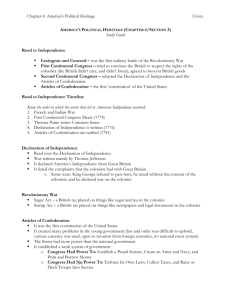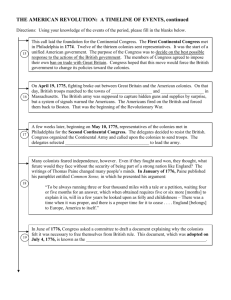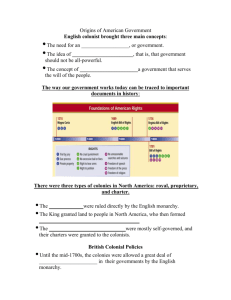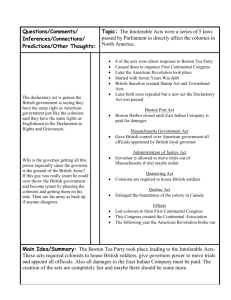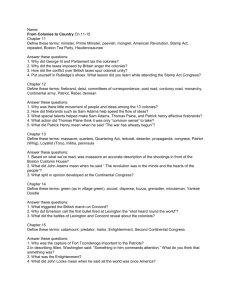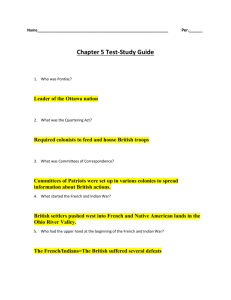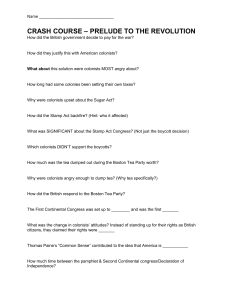Name ________________________________________________________ Pd ___ ___/___/____ Midterm Review
advertisement
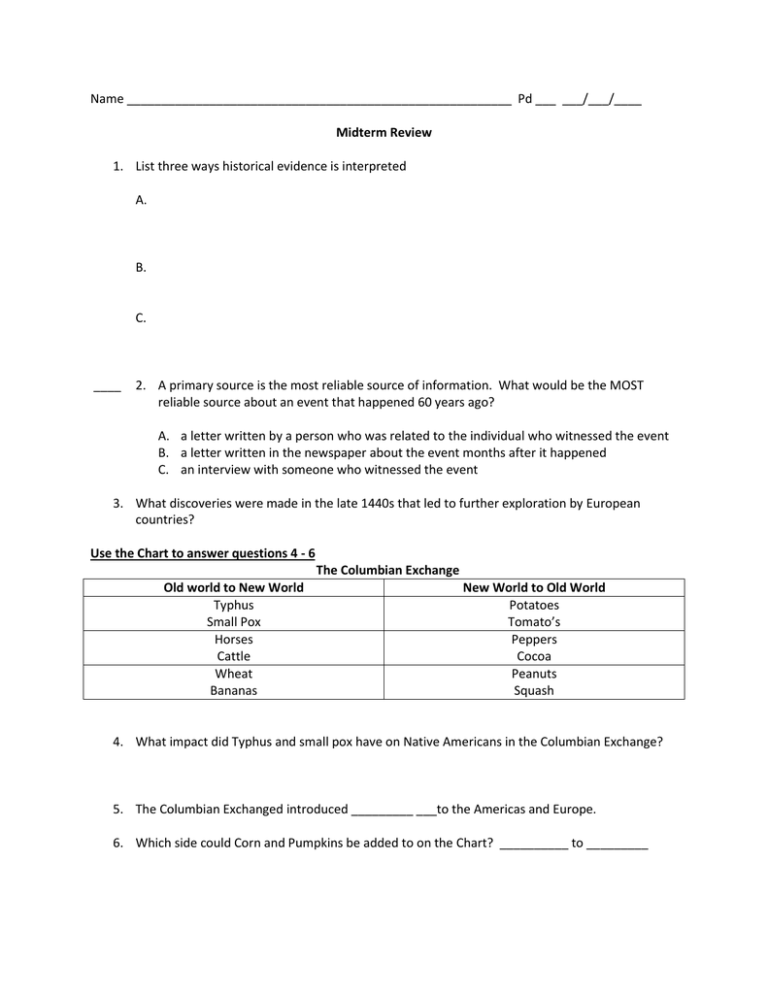
Name ________________________________________________________ Pd ___ ___/___/____ Midterm Review 1. List three ways historical evidence is interpreted A. B. C. ____ 2. A primary source is the most reliable source of information. What would be the MOST reliable source about an event that happened 60 years ago? A. a letter written by a person who was related to the individual who witnessed the event B. a letter written in the newspaper about the event months after it happened C. an interview with someone who witnessed the event 3. What discoveries were made in the late 1440s that led to further exploration by European countries? Use the Chart to answer questions 4 - 6 The Columbian Exchange Old world to New World Typhus Small Pox Horses Cattle Wheat Bananas New World to Old World Potatoes Tomato’s Peppers Cocoa Peanuts Squash 4. What impact did Typhus and small pox have on Native Americans in the Columbian Exchange? 5. The Columbian Exchanged introduced _________ ___to the Americas and Europe. 6. Which side could Corn and Pumpkins be added to on the Chart? __________ to _________ Chapter 4 _____ 1) Which answer best describes the geography and economy within the Middle Colonies? A. B. C. D. Swampy moist climate with fishing as the main economic activity Mild winters and great soil, most colonists farmed for a living Long cold winters with arid dry soil Mainly forested with shipbuilding as the Key economic activity Chapter 5 1. What is the major reason for the conflict between the English and French that eventually led to the French and Indian War? 2. Why did England raise taxes on its colonies after the 1763? 3. Sam Adams, John Adams and Patrick Henry were ____________ ___________ who protested against the unfair taxation of the colonies. Use quote to answer questions 3 & 4 Boston Colonists, December 16, 17773 “Boston Harbor is a teapot tonight! The Mohawks have come” 3. What historical event does this quote refer to? _______________________________ 4. What was the reason or goal for protesting the Tea Act? 4. List the four parts of Intolerable Acts A. B. C. D. Chapter 6 1. The three Main Ideas (parts) of the Declaration of Independence are A. B. C. Use the quote to answer question 2 Diary of Albigence Waldo, December 14 1777 “I am sick, discounted and out of humor. Poor food, hard lodging, cold weather, fatigue, nasty clothes, nasty cookery…” _____ 2. This quotation above was most likely written by A. B. C. D. A soldier at Valley Forge A Continental Congress member Tea Party participant An American soldier at Bunker Hill 1. What helped to ease the harsh conditions in Valley Forge towards the end of the army’s stay there? 2. Thomas Paine’s pamphlet “Common sense” inspired not only Richard Henry Lee, a delegate of the Virginia Legislature, but many colonists that they should …. 3. Lists the Strengths of the continental army and which was the important to its victory? 4. What battle was the “Turning Point” of the war for the Continental Army? ________________ Chapter 7 _____ 1) Which of the following was a weakness of the Articles of Confederation? A. B. C. D. Congress lacked the power to coin money The Supreme Court could overturn laws passed by Congress State governments had more power than the Central Government Congress could not declare war Use the Diagram to answer questions 24 & 25 2. Why did small states like New Jersey favor the New Jersey Plan? _____ 3) Which of the following resolved the conflict between the two plans of government shown? A. B. C. D. The Great Compromise Three-fifths compromise Bill of Rights Northwest ordinance _____ 4. Which group believed/argued the Constitution must spell out ways to protect peoples’ basic rights? A. Federalists B. Anti-Federalists 5. The process that added the Bill of Rights to the Constitution is called ____________________ _____ 6) Which of the following is NOT a basic goal listed in the Preamble of the Constitution? A. B. C. D. To form a more perfect Union Provide for the common defense promote the general welfare provide welfare for the poor Chapter 8 1. Fill in the powers for each Branch of Government below President (Executive) Congress (Legislative) Supreme Court (Judicial) 2. The responsibility for creating a Public Education System falls under State or Federal Government? 3. What majority of vote is needed by states to ratify a Constitutional amendment? _____ 4) Which of the following is not a Civic Responsibility? A. B. C. D. Owning Property Obeying Laws serving on a Jury being informed

